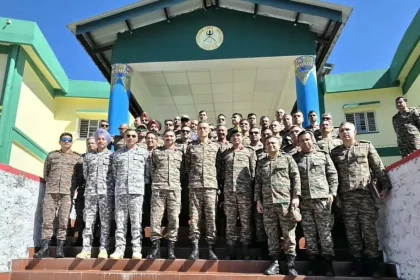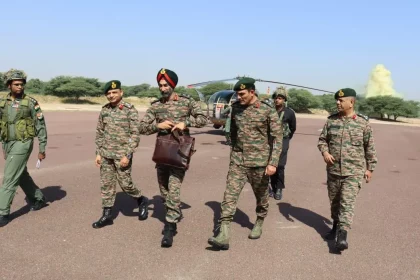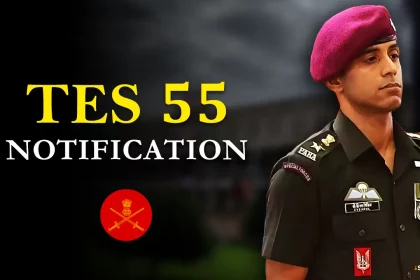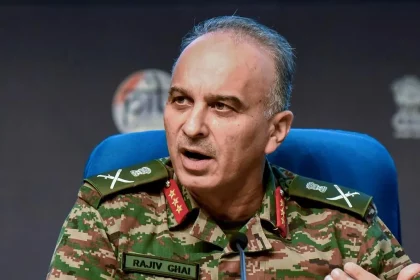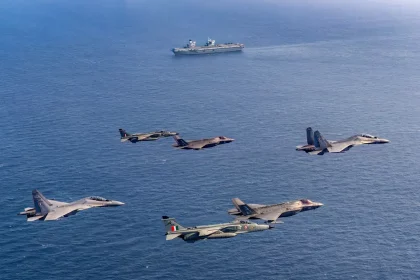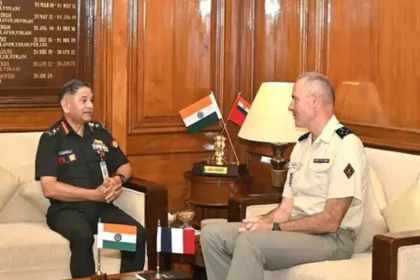Participants of Higher Command Course Visit Forward Areas in Arunachal Pradesh to Enhance Operational Understanding
HCC Officers Gain Firsthand Experience of Northern Front Operations During Arunachal Visit.
Lt Gen H.S. Vandra Reviews Integrated Exercise of Strike Hawks and Ranbankura Division
Lt Gen H.S. Vandra Reviews Integrated Strike Exercise Showcasing Army Aviation–Ground Force Synergy.
TES 55 Notification Technical Entry Scheme Indian Army
Indian Army Invites Applications for Technical Entry Scheme (TES-55); Registration Open Till 13th November 2025.
Over 100 Pakistani Soldiers Killed in Operation Sindoor: DGMO Lt Gen Rajiv Ghai
DGMO Lt Gen Rajiv Ghai confirms over 100 Pakistani casualties in Operation Sindoor and highlights India’s precise, multi-dimensional response to…
IAF and Royal Navy Conduct Joint Exercise Over Indian Ocean Region with Sukhoi-30 MKIs, Jaguars, and F-35Bs
IAF Sukhoi-30 MKIs, Jaguars, AWACS join Royal Navy F-35Bs over Indian Ocean to boost interoperability and regional security.
French Army Chief Shows Keen Interest in Indian Long-Range Systems and Emerging Battlefield Cooperation
French Army Chief highlights India’s combat-proven long-range systems, loitering munitions, AI, and EW capabilities as key areas for strategic defence…

